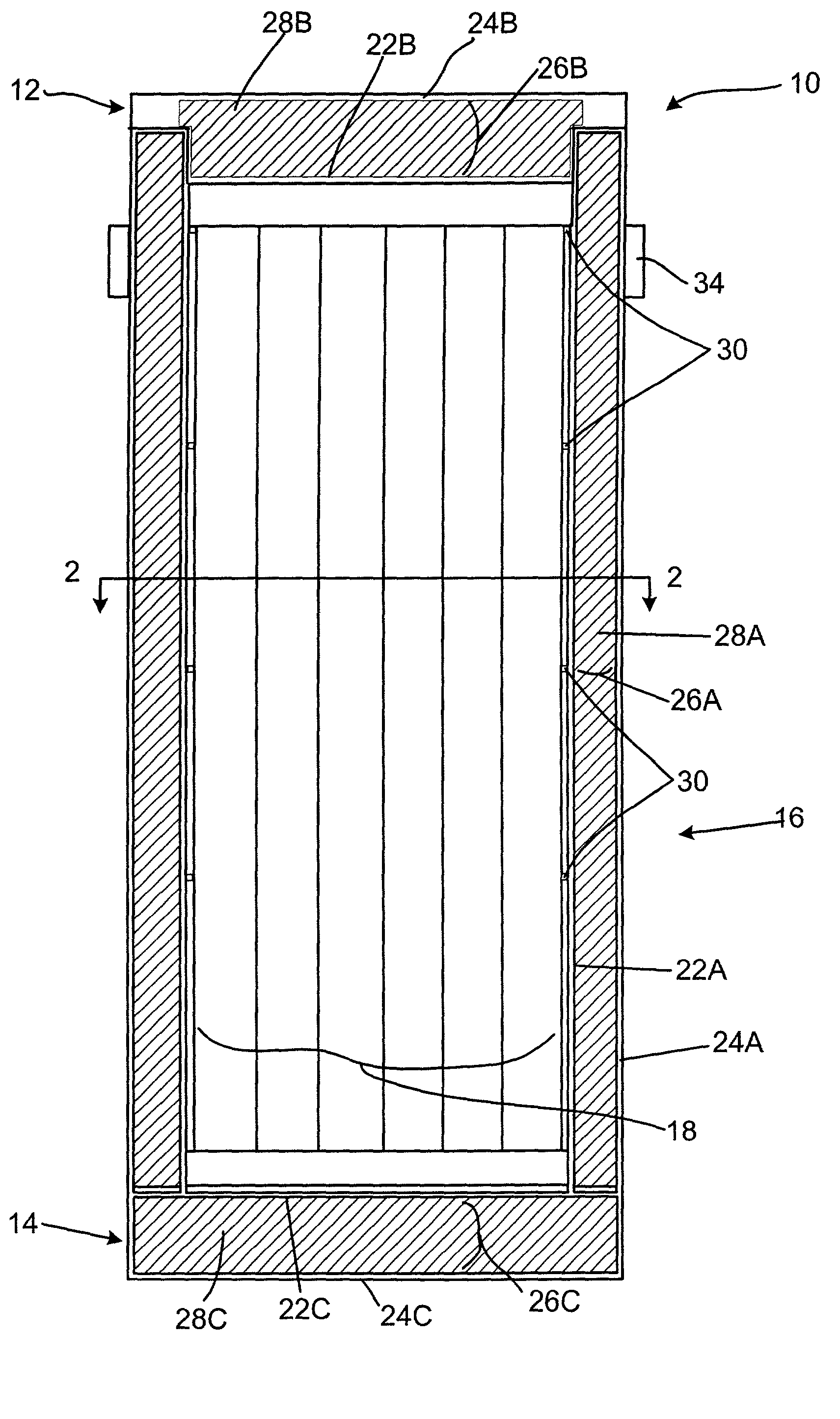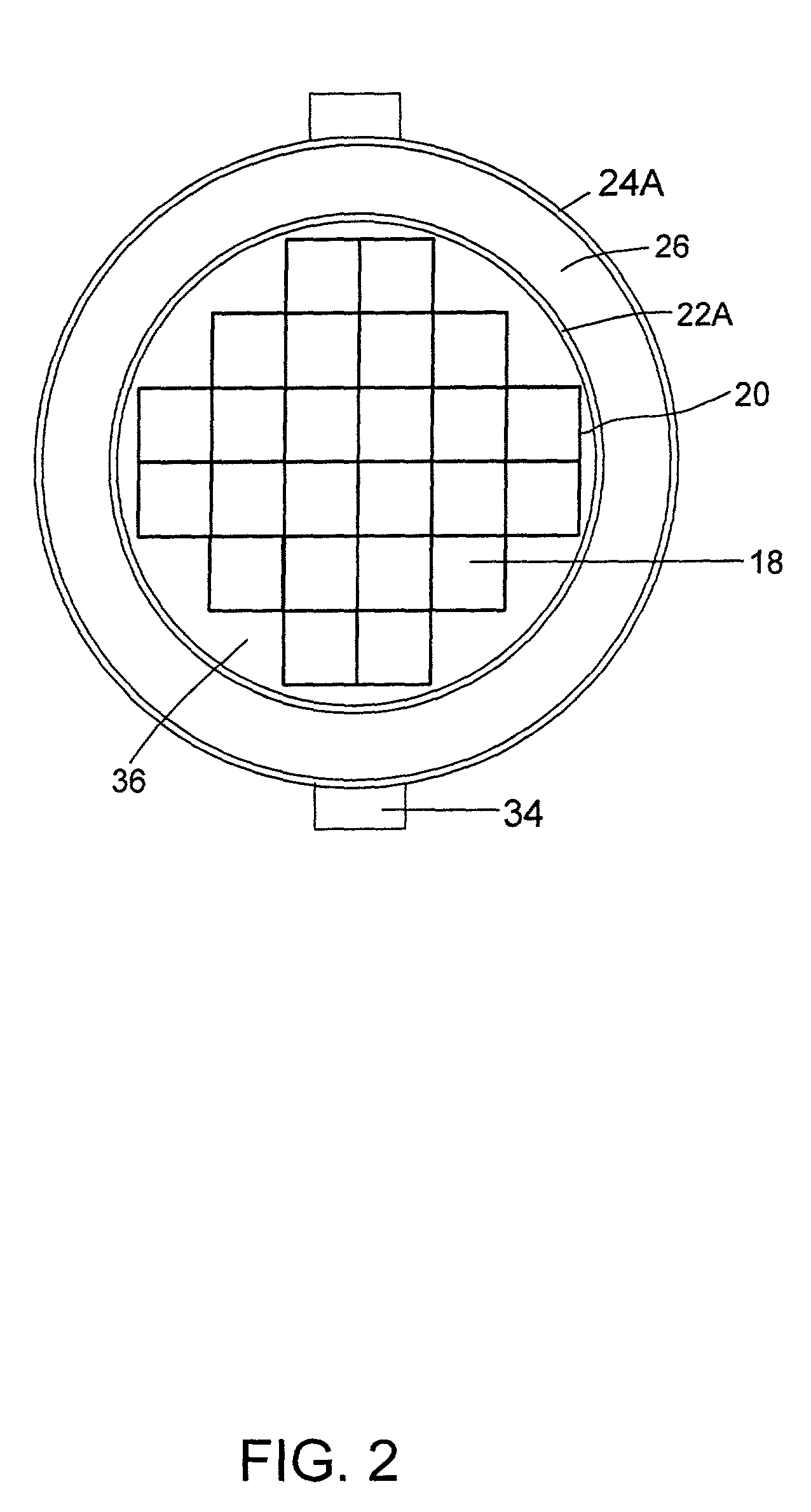Radiation shielding materials and containers incorporating same
a radiation shielding material and material technology, applied in the direction of uranium compounds, other chemical processes, nuclear elements, etc., can solve the problems of radioactive waste, high level waste, mixed waste, etc., and achieve the effect of reducing the cost of radiation shielding
- Summary
- Abstract
- Description
- Claims
- Application Information
AI Technical Summary
Benefits of technology
Problems solved by technology
Method used
Image
Examples
Embodiment Construction
[0071]With reference now to the exemplary drawings, and particularly to FIGS. 1–2, there is shown, in cross-section, a container 10 in accordance with the present invention. The container includes a lid 12, a base 14 and a body 16 defining a central cavity 18. The container 10 is used to store waste material, including, in particular, radioactive waste materials, such as SNF. In this regard, a plurality of pressurized water reactor (“PWR”) assemblies housing waste material are fitted inside of a basket assembly 20 disposed within the container 10, as best seen in FIG. 2. The container 10 can have a variety of geometries. In the embodiment shown in FIGS. 1 and 2, the container is cylindrical, having a circular cross-section. Alternatively, the container could have a cross-section that can be square or hexagonal, among other geometries, in order to facilitate various packing and storing configurations.
[0072]The body 16 includes an inner wall 22a and an outer wall 24a thereby defining ...
PUM
| Property | Measurement | Unit |
|---|---|---|
| temperature | aaaaa | aaaaa |
| temperature | aaaaa | aaaaa |
| time | aaaaa | aaaaa |
Abstract
Description
Claims
Application Information
 Login to View More
Login to View More - R&D
- Intellectual Property
- Life Sciences
- Materials
- Tech Scout
- Unparalleled Data Quality
- Higher Quality Content
- 60% Fewer Hallucinations
Browse by: Latest US Patents, China's latest patents, Technical Efficacy Thesaurus, Application Domain, Technology Topic, Popular Technical Reports.
© 2025 PatSnap. All rights reserved.Legal|Privacy policy|Modern Slavery Act Transparency Statement|Sitemap|About US| Contact US: help@patsnap.com



